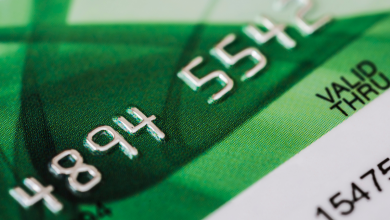
WHAT IS INSOLVENCY AND BANKRUPTCY CODE AND WHY GOVT’S CHANGES ARE BOLD?
In the string of reforms that followed the year 2016, the introduction of IBC was the government’s most important reform and this is a very bold performance. Because Indian capitalism has never appreciated bankruptcy because bankruptcy in India is recognized to be an embarrassment. Bankruptcy is bad but it is not a shame business can fail so we should not hide the fact that a business has failed and second if a business is failed what happens to those to whom that business owes money. So there has to be a means whereby bankers, suppliers, employees of that industry get something reimbursed. For that insolvency of bankruptcy was set up with a bunch of laws. So that was done in 2016 the purpose of insolvency and bankruptcy was that when company when banks conclude that they cannot get their loans back from a company they can go to a national company law tribunal a judicial constituted body specialist special body and take a company through the bankruptcy process and then that NCLT will set up the process in the process there will be a resolution professional who will be an outsider. He can be somebody from the world of finance accountancy or one of those insolvency law firms in Delhi or any other place in India who will supervise the process.
Then they will be a committee of creditors so, people essentially bankers who lent money to that company will form a committee then they will negotiate and see what is the value they want to get and at some point resolution professional after satisfying insolvency himself will call for bids from buyers from this bankrupted company and as bids come and finally the highest bid is accepted by everybody then that money that comes from the buyer will be distributed among the lenders on the basis that the committee of creditors decides.
Now, this whole process was supposed to take place in two hundred and seventy days because the impression earlier was that in the Indian legal system. When this happens the first thing the Reserve Bank of India did was to make an example that this process works and to also check out the creases in the system. They declare the 12 biggest loan defaults in the history of the Indian banking system. Real capitalist countries do not see any shame in bankruptcy but, in India, we do that and even the bankrupt try to brazen it out. So these 12 companies were referred to the insolvency and bankruptcy code process in June 2017. We have been sold and banks have recovered a fair bit of money which is a very good thing. And some have gone into liquidation because nobody came to buy them. There are some issues going on and some have not got sufficient price yet on them. But some have dragged the process through litigation. So, what exactly is the intention of the insolvency and bankruptcy code, and what was to be avoided? So the list of few companies who have undergone the dirty dozens- Bhushan steel Rs. 44,478 crores, Lanco Infratech Rs.44,364 crores, Essar steel Rs.37,284 crores, Bhushan Power and steel Rs.37,248 crores, Alok industries Rs.22,075 crores, Amtek Auto Rs.14,074 crores, Monnet Ispat Rs.12,115 crores, electro steel LTD rs.10, 273 crores, Era Infra Rs.10,065 crores these were the companies at that point accounted for about twenty-five percent of all the bad loans in the banking system.
In India where capitalism is still maturing, public opinion would never have accepted that somebody who has gone bankrupt stopped paying to banks and suddenly, when the commodity cycle gets better he comes back, pays back, and buys his own company. That was not going to be accepted. So, the government amended the law to ensure that the owners themselves after they had been sent to bankruptcy could not buy back their company so that is where SR owners had a setback. Then they went through the appeal in the tribunal but they failed and went to the high court and then to the Supreme Court and through this court process, this SR steel case has gone on for more than six hundred days.
Conclusion – Now NCLT has more judges than the Supreme Court of India. Because there is so much resolution to be down for bad loans. One had been stuck as this other would have followed the same example and delayed the process. This won’t have scampered these big reforms and once again given Indian businesses a bad name. This would have finally driven the banks completely bankrupt because after all how long can the government pay them. But, fortunately, the reforms are in place and the companies can reach out to insolvency lawyers to understand the basics of IBC and the related reforms.





